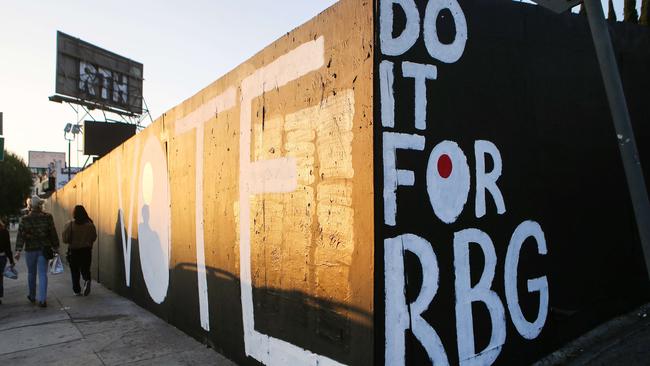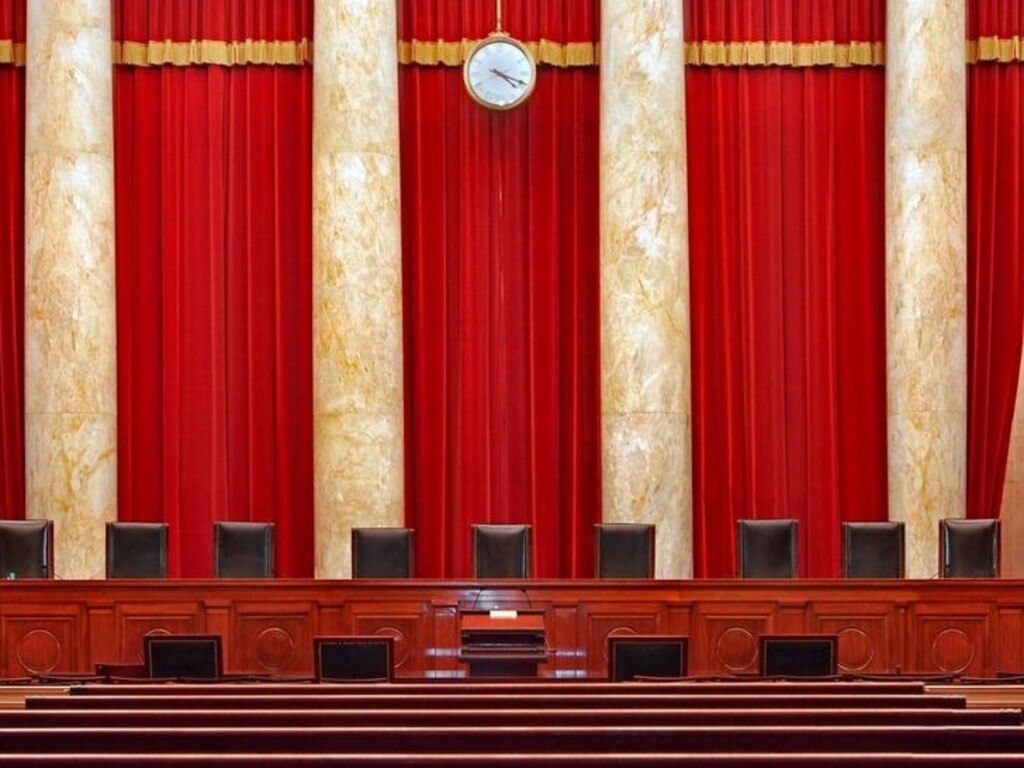
It was neither Trump nor Biden who poked away at those divisions at least initially. It was the media who allowed Ruth Bader Ginsburg just two hour’s post-mortem repose before publishing a plethora of think pieces speculating on who would replace her, how it would happen and when.
GOP leader in the Senate, Mitch McConnell obliged further by issuing a statement that came within four hours of the announcement of Ginsberg’s death. It might just have been a proforma he’d kept in the filing cabinet, marked to be issued in the event of Ruth Bader Ginsberg’s death.
RBG was probably still warm.
She had been ill for some time. The implications of her death had been gamed by everyone, not least of all the White House but it was the media who drove the great furrowing of brows over her death and chose to speculate on what it might all mean. I read an almost endless roll of reports that claimed the Republicans would benefit from a Trump appointment to the bench of the Supreme Court of the United States. Others, almost as voluble, claimed the Democrats would triumph on the back of a backlash from women voters.
No resting in peace
Both parties have seen donations pour into their coffers after Ginsburg’s death. If reports are accurate, the Democrats have received more money than the GOP but neither party is crying poor.
Couldn’t they just let Ginsburg lie in peace for a week or two? Alas, in a hyper-partisan environment even the death of the most admired woman in the land was turned into a sideshow. Ultimately in the US, minds are made up and prejudices ingrained.

Before we knew it, a moral panic swept through the Left and the sneering started on the Right. It may prove to be a lot of noise about not a lot.
Despite what we are hearing about the makeup now and in the future of the bench of the SCOTUS, judges tend not to follow partisan directions.
Earlier this year, Chief Justice John Roberts, appointed by George W. Bush, sided with liberals to block a law that would have restricted access to abortion in Louisiana. Trump’s first appointee, Neil Gorsuch, wrote the majority opinion in a case which extended workplace discrimination protections to LGBTQ Americans.
It is also entirely possible that if Biden wins and the Democrats win majorities in the House and the Senate, the bench of the SCOTUS could be expanded with Biden making his own appointments, thus obliterating the so-called conservative majority.
In other words, those crying foul now might just have to deal with similar shrieks from the other side at some point in the not too distant future.
With a presidential election now less than 50 days away, almost eyes are fixed on swing states — Florida, Pennsylvania, Michigan, Wisconsin, Arizona and North Carolina. There are others perhaps less volatile states like Ohio, Minnesota, Georgia, even Texas to keep an eye on.
As an aside, Wisconsin, Michigan and Pennsylvania — the three most crucial states to determine the election outcome have determined they will not commence counting postal votes until after the voting has closed on November 3. Those decisions (each state decides the rules on voting) are subject to legislative and legal challenge but as it stands, almost certainly a result will not be known on the night of the election. Potentially this will lead to an explosive outcome and one suspects the explosions will not end there.
It may go all the way to the Supreme Court where the cycle of partisan bickering will be complete.
Cutting through the punditry
But let’s leave the election punditry aside for one moment.
Win or lose the election on November 3, Trump will lose in New York State by as much as thirty points. In Massachusetts it will be higher. Virginia was a swing state in 2016 with Clinton heavily favoured to win. Now it sits in a dark shade of blue where Biden holds a commanding 12-point lead in the polls.
In Vermont, home of Bernie Sanders, Trump will go down by at least 25 per cent of all votes cast. In New Jersey, the margin will be at least 20 per cent, likewise in Connecticut, Delaware, and Maryland.
In the most populous state in the union, California, Trump will lose by 25 to 30 points, about half that in Oregon and as we go up the Pacific northwest, back to 25 per cent in the State of Washington.
In the South, the opposite is true. Biden will lose Oklahoma by around 25 points, in Kentucky 20 points. In Alabama, Louisiana and Mississippi, it’s closer to 15 points. And in West Virginia, Biden will lose by upwards of 40 points. In the Great Plains states, the same rules apply. Trump will win the Dakotas by 20 points or more. In Montana and Idaho, the margin will be upwards of 25 points.

Gone are the days of Reagan sweeping the nation and almost every electoral college vote on offer in 1980 before carrying every state bar one in 1984. Or of Bill Clinton in 1992 and ’96 winning GOP strongholds in the mid-west and southern states including Tennessee and Mississippi.
The electoral map of the US started to find its contemporary composition under George W Bush in the contested election in 2000 with a deep divide between red and blue states and only a handful of swing states deciding the outcome.
For all the hype around Obama’s election in 2008, it was no landslide. Obama carried 28 states, including Florida, North Carolina, Colorado, Indiana, and New Mexico. Four years later, he conceded Indiana and North Carolina but hung on.
Trump carried 30 states in 2016 including states Hillary Clinton and the Democrats thought they had in the bag — Ohio, Pennsylvania, Wisconsin and Michigan.
Rusted-on voters
The fact remains that the US has rusted-on political affiliation with only a handful of states determining the outcome. Long odds punters may want to have a dabble at a split electoral college vote for amusement value alone (any bookie offering less than 100/1 should be ignored). There would be no better expression of where the US is politically today.
Trump did not win the popular vote in 2016. It is improbable that he will do so in 2020. It’s around an 8/1 shot anyway, according to the polling analysis of Nate Silver at fivethirtyeight.com.
The odds of him winning more than 50 per cent of the vote are even longer — this time a one in 12 chance.
Biden may well win the popular vote but his chances of winning 50 per cent plus one of the vote or more, are around four out of five. It is quite possible that neither man will win a majority of the popular vote. This in an environment where, if past elections are anything to go by, a little more than half of potential voters fill in a ballot.
It would be wrong to lay the source of the divisions at the feet of Donald Trump. Trump’s politics have merely expanded what was a rupture into a yawning chasm.
The split is not based simply on socio-economic grounds or for reasons of race or ethnicity but is substantially determined by geography alone. As such it places the union under the sort of stress it has not experienced for more than 150 years.
More Coverage









The death of Ruth Bader Ginsburg merely confirmed what we already knew: the US is deeply divided on partisan grounds perhaps more so than at any time since the American Civil War.